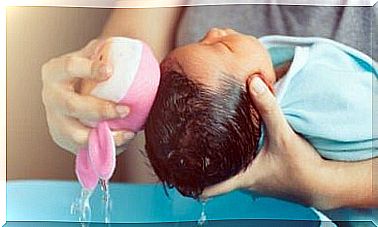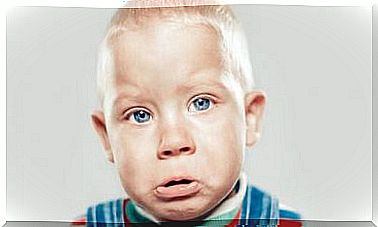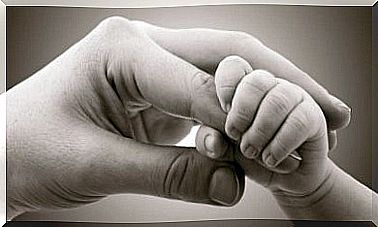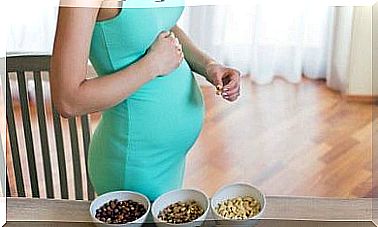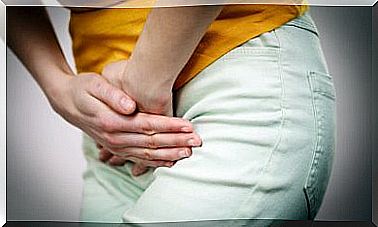Pregnancy Pemphigoid During Pregnancy
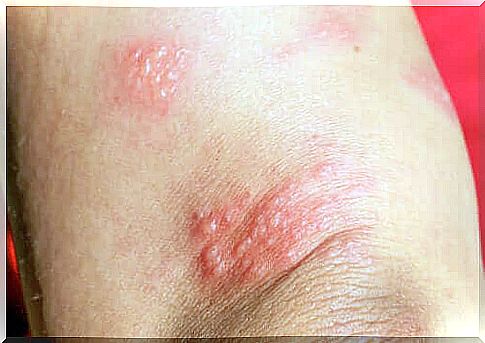
Why does pemphigoid occur during pregnancy?
Pregnancy pemphigoid is most often triggered during the third trimester. However, it can occur at any time during the three semesters or after the birth.
What creates these skin lesions is an autoimmune process that involves antibodies. This means that the immune system mistakenly begins to attack its own skin.
However, it usually goes away on its own within two months after birth with the exception of rare cases where it can last for a longer period of time. According to studies in the Orphanet Journal of Rare Diseases, pregnancy pemphigoid occurs in one in 40,000-50,000 pregnancies with no difference according to ethnic origin.
Clinical manifestations of gestational pemphigoid
The onset of gestational pemphigoid is polymorphic. Itching is the predominant symptom of this disorder that can sometimes occur before the actual occurrence of the skin lesions.
The itchy sensation starts in the abdominal region, where a variation of red papules will later occur. These are urticariform erythematous plaques or lesions of the erythema multiforme type. After about three weeks, these papules will go from being small blisters to being large, red, fluid-filled blisters.
The lesions, which were initially local, will begin to spread to the abdomen, extremities and the rest of the body. However, it rarely affects the mucous membranes and the face.
In 75% of cases, the disease is reactivated at birth. Pregnancy pemphigoid lesions usually disappear within 15 weeks of birth without leaving any traces of scars.
Possible differential diagnoses
When diagnosing this disorder, it is important to rule out the presence of itchy, urticaria-like papules and plaque when consulting a specialist. It is also known as PUPPP and it is another type of skin rash.
PUPPP is an itchy pregnancy dermatosis, some clinical manifestations are very similar to those of pregnancy pemphigoid. Their similarities are as follows:
- Both first begin to occur in the abdominal region.
- Both occur more frequently in the third trimester.
- The rash disappears spontaneously a few weeks after birth.
There are very few characteristics that differentiate them. Furthermore, PUPPP usually does not end up becoming large, fluid-filled blisters, and when it spreads, it also spreads to the legs and armpits.
How To Confirm A Diagnosis Of Pregnancy Pemphigoid
The definitive diagnosis will take place with a specialist based on the patient’s symptoms and signs. According to the doctor’s criteria and the clinical findings of the physical examination, the doctor will indicate whether it is necessary to take a biopsy of the lesion.
This procedure involves the use of local anesthesia and removal of part of the lesion so that it can be examined in a laboratory. The doctor may even consider taking a blood sample to make an analysis of the antigen level in the blood.
Treatment and management of gestational pemphigoid
The treatment of gestational pemphigoid will depend on the stage of skin lesions and the severity of the clinical picture. Two of the premises of treatment according to Dermatologic Clinics are as follows:
- Relief of itching in the pregnant woman.
- Avoiding the production of new blisters.
Corticosteroids
In mild cases, doctors prescribe topical corticosteroid creams to reduce itching and inflammation in the affected area. During pregnancy, mild or moderate, topical corticosteroids are preferred over strong or very strong ones.
Antihistamines
It is possible to combine topical corticosteroids and oral antihistamines to enhance the effect according to reducing the itching. Second-generation histamines (cetirizine, levocetirizine and loratadine) are best used during pregnancy.
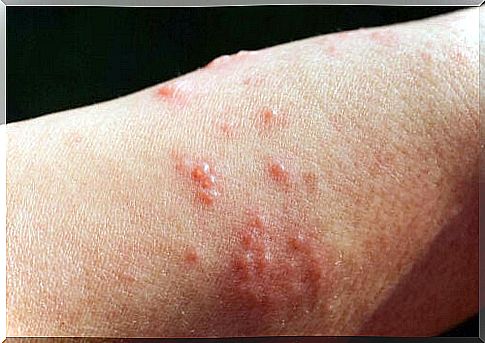
You should always consult with your obstetrician before taking any medication if you are pregnant. This actually also applies to over-the-counter medications.
Hygiene and care conditions
In mild cases, your doctor will recommend that you implement certain precautions at home to help reduce the itching:
- Keep skin cool and moist.
- Stay in a cool and well-ventilated room.
- Wear 100% cotton clothing and avoid synthetic fabrics.
Pregnancy pemphigoid and quality of life
In short, the symptoms that this condition causes can create some weakness in pregnant women. However, pregnancy pemphigoid does not pose a direct risk to the mother’s health. A multidisciplinary approach between the gynecologist, the obstetrician and the dermatologist is therefore necessary to ensure a coordinated and appropriate follow-up.
